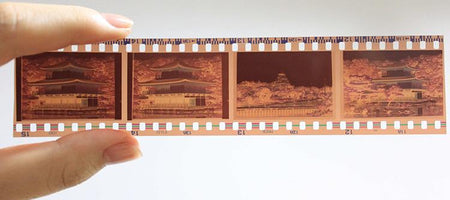Long before digital cameras, there was the 8 mm—a revolutionary invention in cinematographic history and practically the only recorder of its time able to capture motion picture while on a budget. Although the small-format film is now considered outdated, witnessing its grainy and gritty video is like finding a rare vintage treasure in a thrift shop. 8 mm films send you back in time, even when capturing a modern scene, to invoke a sense of sweet nostalgia. While many older technological inventions have died off altogether (think VHS tapes, audio cassettes), there are some old models that are just…well, special: Polaroid cameras, vinyl records, and, of course, the 8 mm.
So, What Is the 8 MM?
It probably goes without explanation that the 8 mm film, which premiered on the market in 1932, is a visual recording device that sits eight millimeters wide. But surprisingly the original 8 mm actually used 16 mm-wide film and only exposed half of its width. For this reason, this standard format was also commonly referred to as Double 8. To process, the film was cut down the center and then shown via video players intended for 8 mm-wide film. Once a roll was completely fed through the player, users would then flip the reel and expose the other half. It may seem like extra work, but this was cheaper and more efficient than other options, and it permitted up to four minutes of recording—more than most all alternatives at this time!
The Super-8
With great success, the standard 8 mm was followed by the creation of Eastman-Kodak’s iconic Super-8. This format was designed for the masses—cheap and straightforward, for anyone interested in making films of their own. The Super-8 featured a more hands-off, cartridge-type of film loading—a method that immediately gained popularity among consumers. Because there was no need to thread film through the camera with one’s fingers, film was damaged less often. Additionally, this automatic methodology helped pave the way for later programmed systems.
Further Evolution
One thing to note is that original 8 mm and Super-8 film formats did not include sound. It wasn’t until 1973—nearly 40 years after the first 8 mm film premiered—that an audio version was made. This type of film recorded sound onto film using magnets. While this was revolutionary, the sound quality was spotty and resulted with numerous negative reviews. The experimental nature of this creation, however, helped filmmakers explore other options, eventually leading to external audio recording. Nowadays, any movie’s sound almost always comes from some sort of exterior system.
The 8 MM Today
It’s clear that without earlier forms of film, we wouldn’t have the advanced versions we have today. As technology has evolved and digital film has flooded the market, the 8 mm has become merely a thing of the past for most consumers. That said, some independent filmmakers prefer this older form. There are even film festivals in certain parts of the world dedicated solely to 8 mm recordings, such as the annual Bentley Film Festival in Kansas City, Missouri. It’s quite possible that the unique quality of the 8 mm format will be considered a special vintage treasure for the rest of time!













